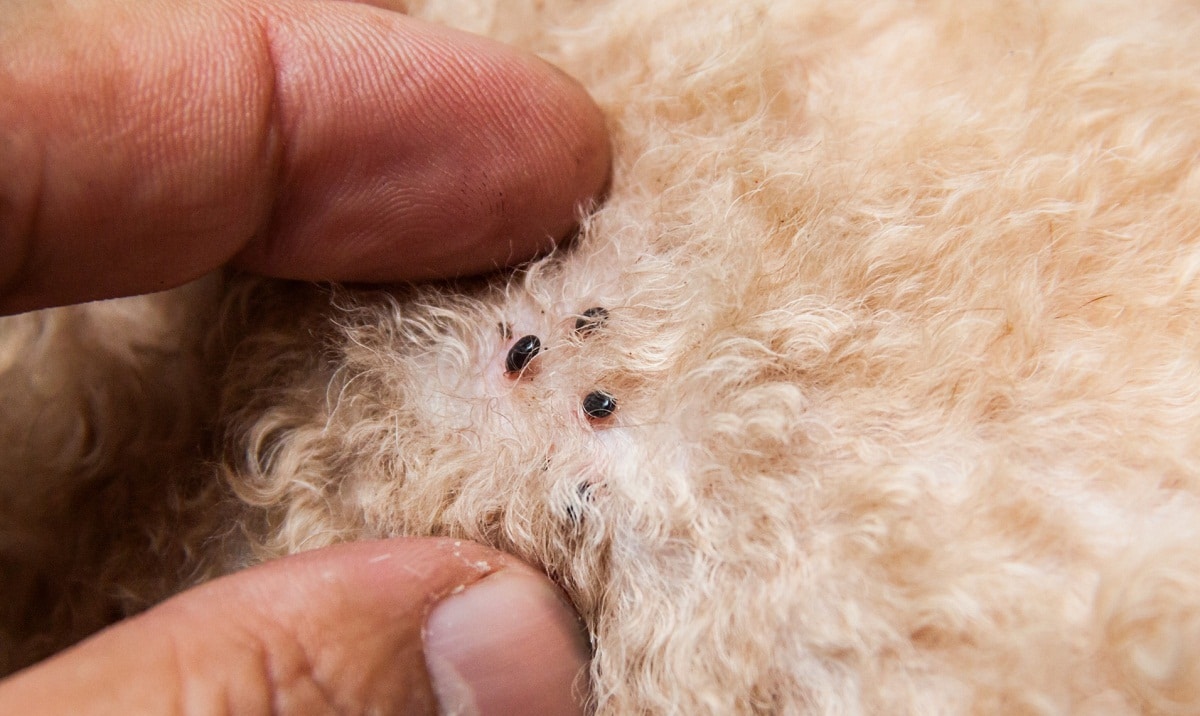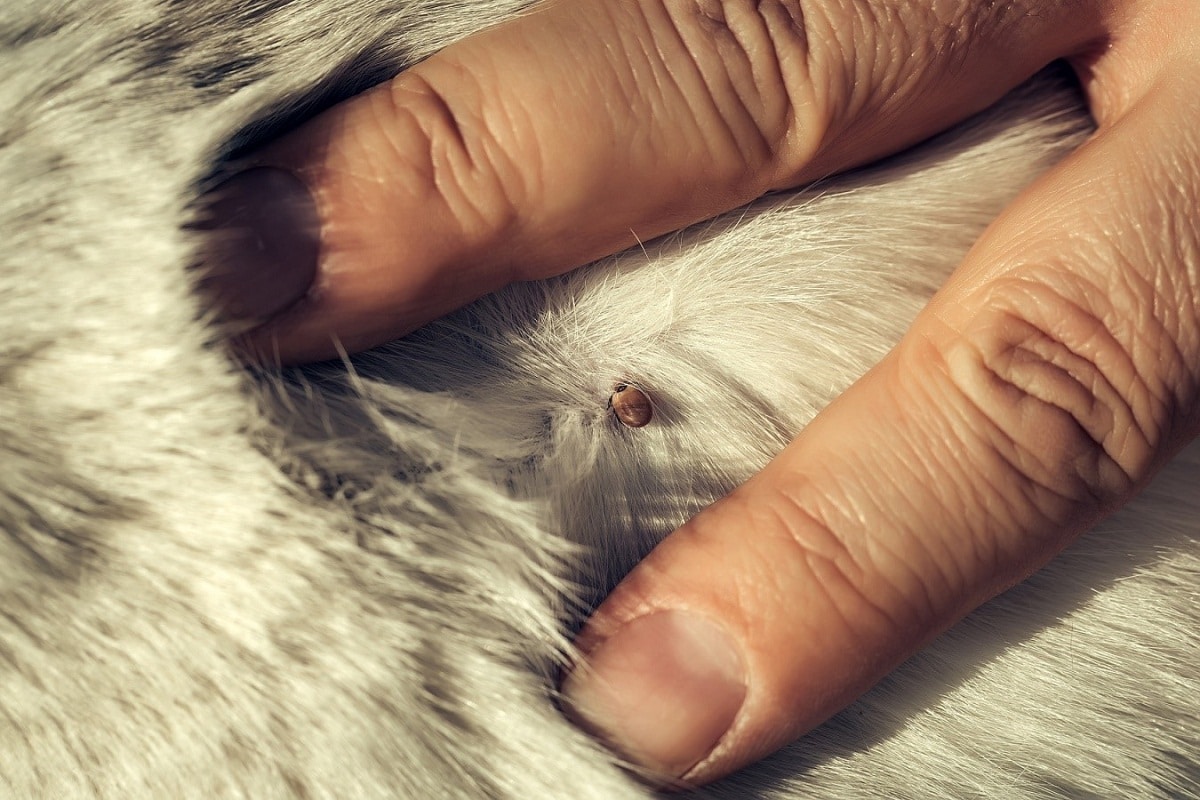
We'll see now what are hemoparasites and which of them are the ones that we are going to find most frequently. These pass into the bloodstream or skin of the dogs using fleas, mosquitoes and ticks as a vector, being responsible for diseases that seriously risk the dog's health.
In addition, the diagnosis is complicated since the symptoms are not specific on the one hand and on the other hand there may be presence at the same time of various haemoparasites. Due to the consequences on the health of dogs, prevention is vital since there are even some of them that have the transmission capacity to people (zoonosis).
Hemoparasites in dogs, what are they?
Hemoparasites are known as wide variety of obligate parasitic organisms of blood cells, which manifest as nematodes, bacteria or protozoa.
These reach dogs through the bite of insects that are very common and are always present in the environment, such as ticks, mosquitoes or fleas and that they are infected with hemoparasites, acting as vectors.
What are the types of hemoparasites?
Next we will mention the most outstanding ones:
- Dirofilaria immitis.
- Anaplasma platys.
- Leishmania infatum.
- Borrelia burgdorferi.
- Bartonella spp.
- Rickettsia conorii.
- Erlichia canis.
- Babesia canis.
- Hepatozoon canis.
The names of the diseases in dogs derived from these parasites have been assigned according to the type of hemoparasite that has generated it, that is, filariasis, anaplasmosis, babelosis or bartonellosis and so on. It should be noted that even when the dog may be affected by one or more of them, all the diseases they cause are very serious, to the point of causing death.
In addition, it must be borne in mind that some of them are transmitted to people since they depend on a vector that can very well bite humans. Each pathology depends on a different vectorFor this reason, the disease that the dog can contract will depend on the area where it lives and on which of the insects that we have mentioned predominates and the animal is exposed.
Symptoms of Hemoparasites in Dogs
Since there are no specific clinical pictures associated with this type of infection and, on the contrary, they are variable, may be present in different pathologies, which makes it difficult to diagnose what type of hemoparasite is causing the symptoms in the animal.
If we add to this that several diseases may be manifesting at the same time, the situation becomes more complex in the face of a diagnosis. However there is symptoms that can give us some indications of its presence in dogs, among them:
- Fever.
- Neurological disorders.
- Considerable weight loss.
- Anemia.
- Anorexia.
- Cough.
- Weakness.
- Trouble breathing
- Alopecia.
- Edema.
- Wounds.
- Dehydration
- Nosebleeds
- Rhinitis.
- Blood in the urine.
- Hepatitis.
- Bloody stools
- Lethargy
- Jaundice.
- Vomiting
- Kidney failure
- Increased amount of urine.
- Swelling of the lymph nodes.
- Drink more water than usual.
- Abundant secretions in the nose and eyes.
- Limp.
- Alterations in the eyes.
Where are hemoparasites in dogs diagnosed?
You must go to specialized laboratories to obtain the diagnosisOf course, the veterinarian will always be involved to carry out the review and collect the samples according to the symptoms and the suspected hemoparasite is the one that is causing them.
Recommended laboratory tests for diagnosis include: serologies, PCR, cytologies, cultures or smears and in any case it will be possible to observe them in the blood as well as the antibodies, although it is not always so easy to find the identification.
However, to support the identification there are diagnostic kits that facilitate the task, identifying in a few minutes the presence of these in the dog's blood and these can be applied in the same veterinary clinic, although results are not 100% guaranteed. The truth is that the specialist has to look for all possible routes until reaching the correct diagnosis and then being able to apply the treatment, thus preventing the dog from being at risk of death.
Treatment for the cure of hemoparasites in dogs
Treatment is essential and especially if it is about hemoparasites that affect humans. In the case of dogs that are sick, the necessary tests including blood testsas it is a way to determine how you are in general health and if your organs are working well.
To treat diseases there are drugs specially designed to neutralize the hemoparasite that is affecting the health of the dog, the Treatment is also supplemented with medications for specific symptoms and antibiotics, all based on test results.
Depending on the severity of the dog, hospitalization is recommended to apply intravenous treatment as well as fluids. This type of treatment must be applied for a long period of time and even so it is likely that the dog will not survive, for this reason prevention is more than essential.
Prevention involves avoiding however these parasites come into contact with the dog, to achieve this there are many options and in this regard the veterinarian can contribute a lot. Among them is the option of deworming, which you can do yourself by applying pipettes, flea, tick and mosquito collars, etc.

In case the dog has contracted leishmaniasisAlthough it is true that there is no way to prevent the infection from reaching it, if there is a vaccine that does not allow the parasite to spread through the body and therefore the symptoms will be reduced or they will not appear in the dog.
Applying this vaccine in a preventive way to dogs that live in areas where the contagion is high, is a solution that you have within reach. It is placed for the first time at 6 months and then a dose should be placed every year and under the control of the veterinarian.
We have seen how hemoparasites have the ability to put the lives of dogs at risk and how difficult it can be to reach an accurate diagnosis quickly. That is why when you have the information on the forms of contagion and the types of hemoparasites that exist, dog guardians can carry out preventive work on their pets, which consists, on the one hand, of preventing them from coming into contact with the vectors or those that cause the diseases themselves.
On the other hand, the owners have the responsibility to take it periodically to the veterinarian and request vaccines or any preventive treatment depending on the area where they reside and to avoid contagion. Similarly, there are preventive actions that are available, such as insect repellent necklaces, among others.

